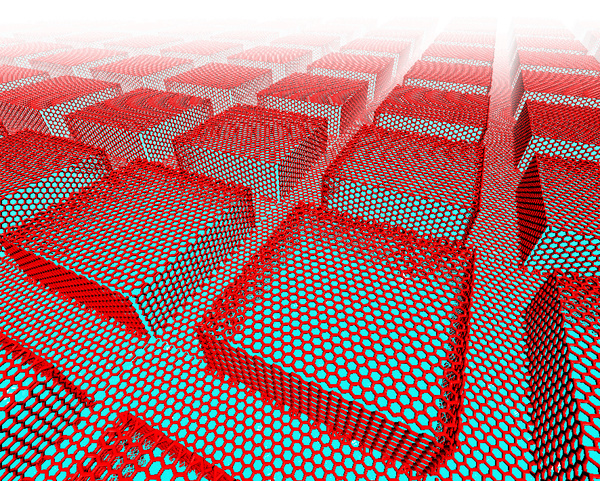|
a team of scientists at rice university recently published research on a new theory that could provide an enhancement using bumpy nanostructures and graphene to interface between gallium nitride semiconductors and diamond heat sinks.

rice researchers theorize that graphene pillars could enhance diamond heat sinks. (rice university)
the theoretical research conducted with computer simulations constructed nanopatterns and added a layer of graphene to the flat junction between the heat sink and the component. the study showed that this would allow phonons, which are quasiparticles of sound that also carry heat, to disperse evenly across the heat sink and enhance heat transfer.
this could be a breakthrough for cooling increasingly smaller and component-dense electronics, according to the researchers, who were quoted in a story on the rice website.
the simulations constructed 48 grid patterns with square or round graphene pillars. according to the article, “sinking a dense pattern of small squares into the diamond showed a dramatic decrease in thermal boundary resistance of up to 80 percent. a layer of graphene between the materials further reduced resistance by 33 percent.”
the work was published in the american chemical society’s applied materials and interfaces. the abstract from the report stated:
“improving heat transfer in hybrid nano/microelectronic systems is a challenge, mainly due to the high thermal boundary resistance (tbr) across the interface. herein, we focus on gallium nitride (gan)/diamond interface – as a model system with various high power, high temperature, and optoelectronic applications - and perform extensive reverse nonequilibrium molecular dynamics simulations, decoding the interplay between the pillar length, size, shape, hierarchy, density, arrangement, system size, and the interfacial heat transfer mechanisms to substantially reduce tbr in gan-on-diamond devices.
“we found that changing the conventional planar interface to nanoengineered, interlaced architecture with optimal geometry results in >80% reduction in tbr. moreover, introduction of conformal graphene buffer layer further reduces the tbr by ~33%.
“our findings demonstrate that the enhanced generation of intermediate frequency phonons activates the dominant group velocities, resulting in reduced tbr. this work has important implications on experimental studies, opening up a new space for engineering hybrid nano/microelectronics.”
|